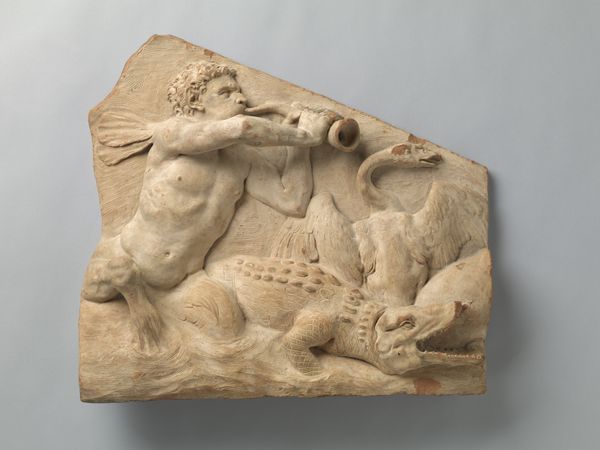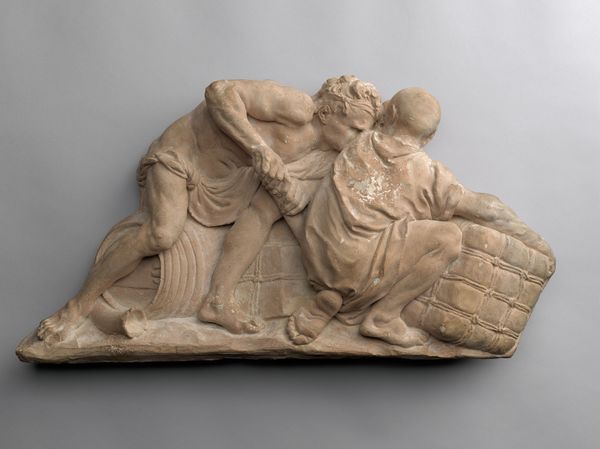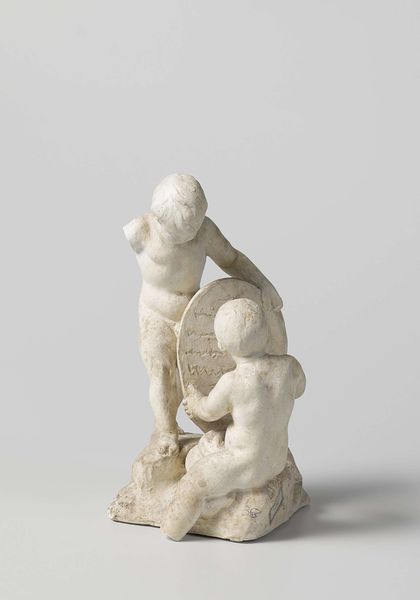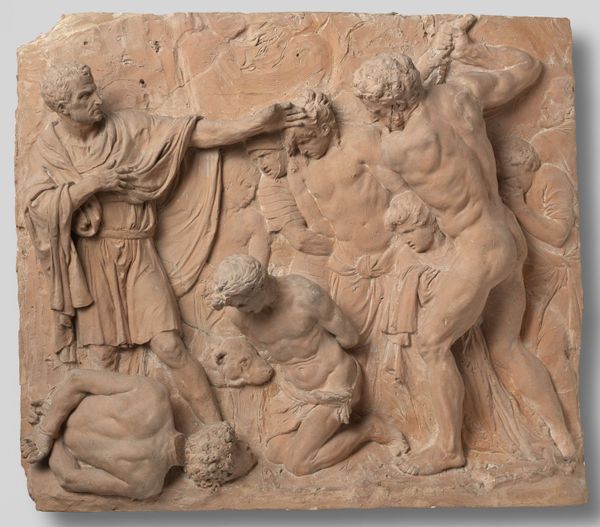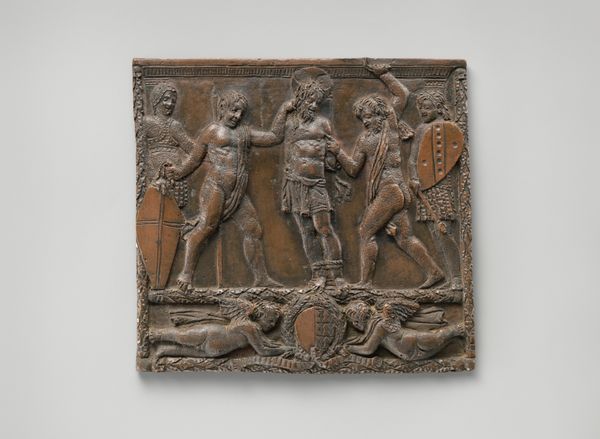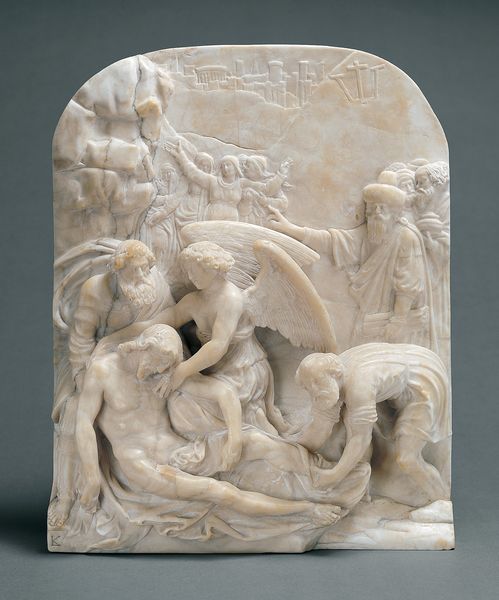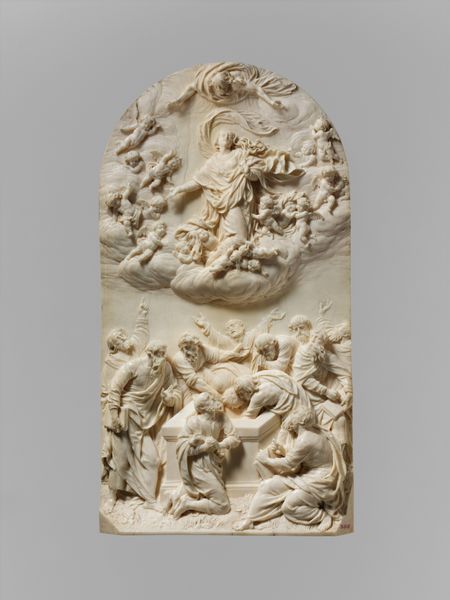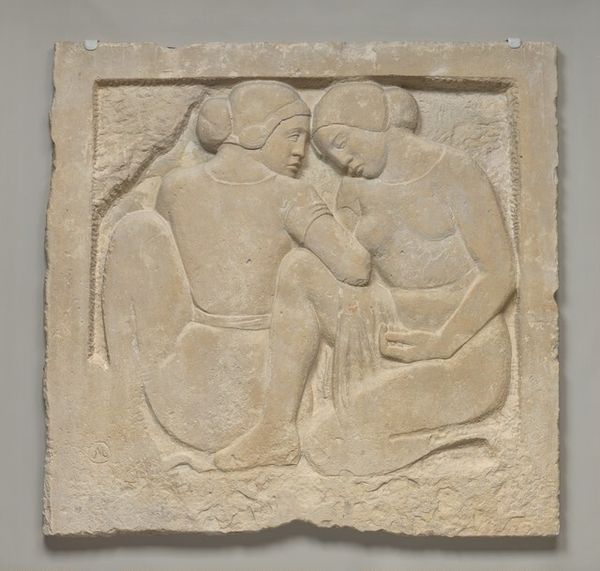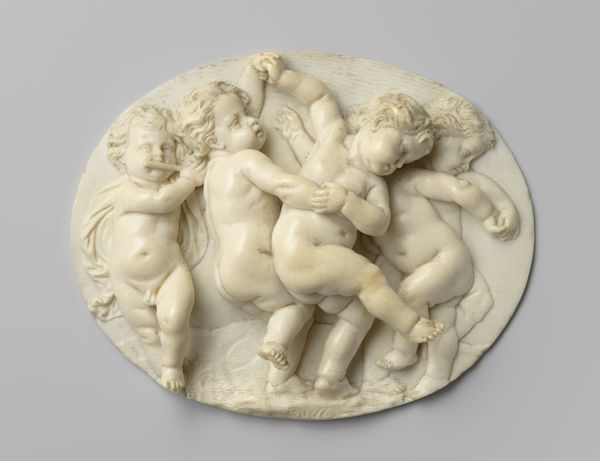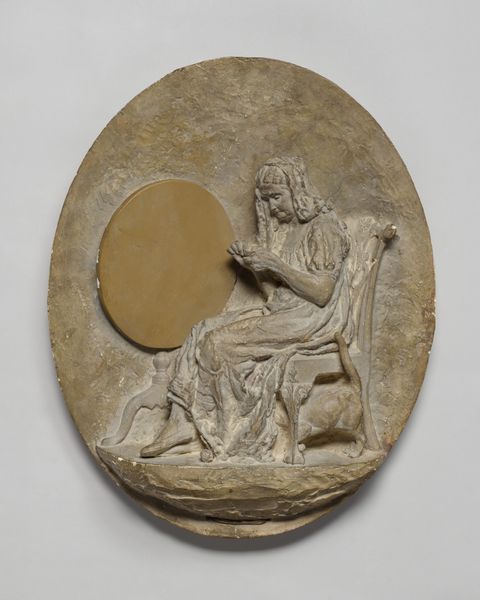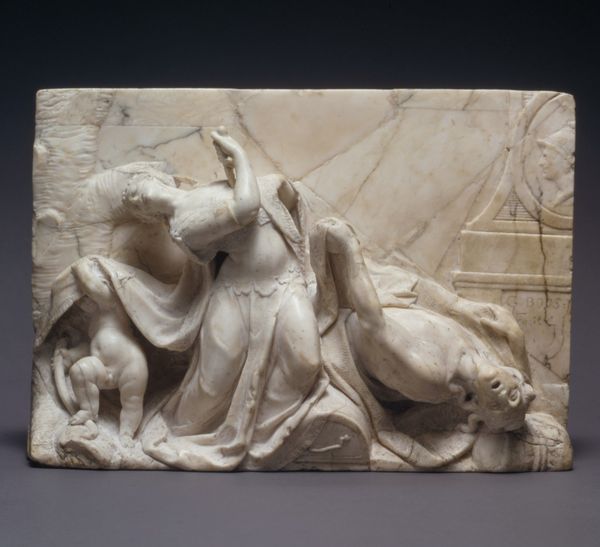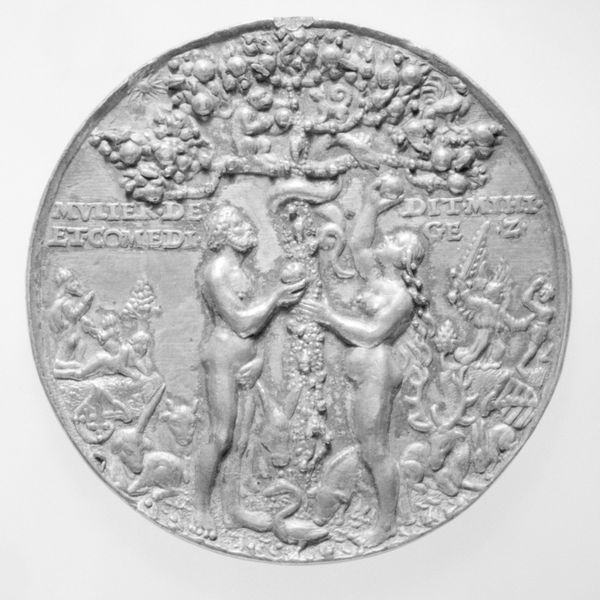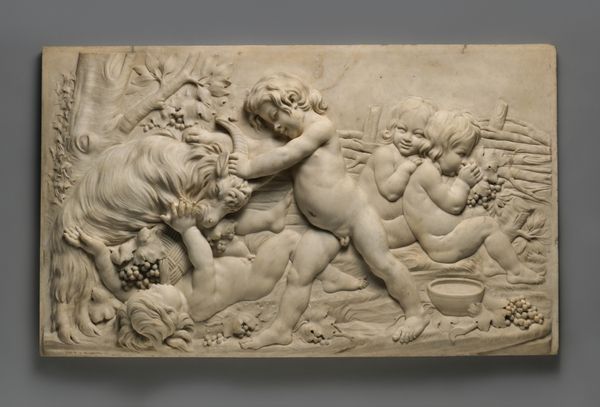
relief, sculpture, marble
#
neoclacissism
#
sculpture
#
relief
#
figuration
#
form
#
sculpture
#
history-painting
#
marble
Dimensions: diameter 25 cm, height 5 cm, height 7.5 cm, width 40 cm, depth 40 cm
Copyright: Rijks Museum: Open Domain
Curator: Allow me to introduce you to "Twee putti, tondo," a captivating relief sculpture crafted sometime between 1800 and 1900, attributed to Eugène Lacomblé. It's sculpted in marble, featuring two cherubic figures within a circular frame. Editor: It feels...incomplete. Charming, yes, but definitely aged. I’m immediately drawn to the crack bisecting it – it adds a sort of wabi-sabi effect. The soft hues enhance this, giving it all the gravitas of ancient stone tablets bearing stories from a lost world. Curator: The 'tondo', the circular format, was prevalent during the Renaissance, revived during the Neoclassical era as this artwork testifies, often employed to evoke classical antiquity. The putti themselves – these winged cherubs – were traditional symbols of love and innocence. Their presence brings forth ideals tied with family virtues in a way. Editor: Absolutely, a loaded iconographical figure, they exude a feeling of both lightness and burden, seeing that these aren't the ethereal winged cupids we tend to picture but figures that convey groundedness by being decidedly earthy. The sculpting itself is very intimate, I wonder, who were they intended for? I can almost hear the rustling of garments as these figures stir on! Curator: What is also interesting here, to further this intimacy, is that the Putti are also surrounded by household utensils. On the left-hand side we see some vague shapes we can easily identify as pottery and pans, items used every day. This element brings this godly depiction to life, humanizing this godly reference. Editor: Definitely! They ground them in very specific context as these background pieces do look so detailed and lifelike that I believe that these cherubs embody both divinity and the beauty found in ordinary life! As far as symbolism is concerned, I think that there are numerous psychological undertones! Curator: Absolutely! A tangible reminder of the dance between the ethereal and the quotidian through the eyes of 19th century neo-classicism. Editor: It’s a dialogue in stone between divinity and humanity, isn't it? Thanks to this sculpture, this resonates so profoundly!
Comments
No comments
Be the first to comment and join the conversation on the ultimate creative platform.
